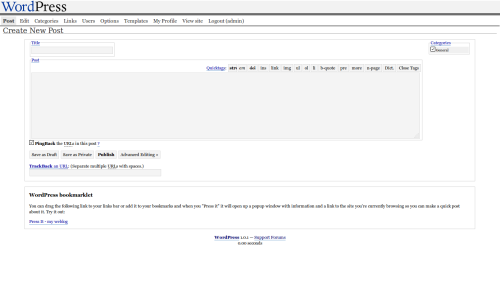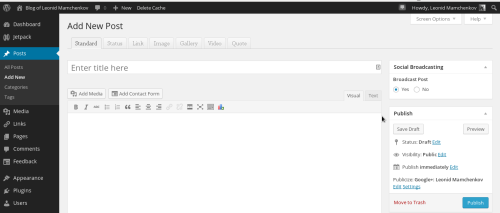Fedora community celebrates the release of Fedora 20 today. It is an anniversary release, marking 10 years since the birth of the project. Yes, that’s two releases per year, all according to the six month release cycle. Here, I’d like to do a little side tour.
Not many people understand what a Linux distribution is, much fewer comprehend how much work goes into making one. I have been following Fedora closely since it was born, and tried my hand at building a Red Hat based Linux distribution myself. Of course, it’s been years since, and many things got simpler and easier, but the overall effort, I’m sure, is still pretty incredible.
Let me break it down for you a bit. In it’s simplest form, a Linux distribution is just a collection of software. Pretty much anybody can take a Linux kernel, bash shell with a few tools, and throw together the simplest of all distributions. But Fedora is not that. Fedora is much larger. It consists of thousands of packages. Each package is not just thrown in, it is tested, packaged and maintained, to make sure upstream patches and updates are integrated properly, and all bug reports travel back upstream. All of these packages are tested both separately and together to make sure they work with each other. Often, custom patches have to be developed and applied. All of these are supported on multiple hardware architectures, in a numerous variety of scenarios.
Just that alone is a monstrous amount of work. But that’s not all of it. Fedora maintains a huge infrastructure to make sure tests can be executed, updates could be distributed, and community members can talk to each other.
Tonnes of help is provided to anyone in need. This includes wiki pages, mailing lists, IRC chats, etc. Help covers not only newcomers to Fedora distribution, but also seasoned users, system administrators, testers, and also marketing promoters. A lot of this has been translated into dozens of languages and distributed geographically.
And all of it is an ongoing process. Just think about it – today the new version is making its way around the world, and if you run “yum update” tomorrow, you’ll definitely find a few packages with freshly baked fixes and improvements.
Thousands and thousands of people are involved in this. Some write code, some administrate systems, some negotiate with upstream providers, some test software, some write documentation, some translate, some organize shows and conferences, some train people and answer silly questions. And in all of this havoc and madness, somehow, an original release cycle of once every six month is still being kept. Yes, true, an occasional schedule slip of a week or two occurs, but overall, it has been a solid two releases per year. Every year. For the last 10 years.
A lot of this is hard work. A lot of it is fun. But there are also sad chapters in this history. Fedora 20 is dedicated to Seth Vidal, who was tragically killed in a hit-and-run accident while he was riding his bicycle earlier this year.
On July 8, the Fedora Project lost Seth Vidal, a dedicated, tireless, and brilliant contributor. Seth was a lead developer of Yum and the Fedora update repository system. He worked to ensure that the technical and community infrastructure of Fedora worked well and consistently for users and contributors around the world. Seth touched the lives of hundreds of Fedora contributors directly and millions of others indirectly by improving the experience of using and updating Fedora.
The Fedora Project dedicates the Fedora 20 release to Seth and asks that you join us in remembering his generous spirit and incredible work that helped make Fedora what it is today. We miss you, Seth.
There are ups and downs, victories and losses. There is no other way in the project of this magnitude, in a crowd of people so huge, and in such a dynamic environment, all lasting for so long.
With all that in mind now, I suggest you give Fedora 20 a try, if you are not a Fedora user. If you are – happy upgrading! And let’s not forget to say a huge thank you to everyone who made this release possible. Good job, guys!
P.S.: If you are interested in the actual changes of this release – please have a look at the changeset document.


